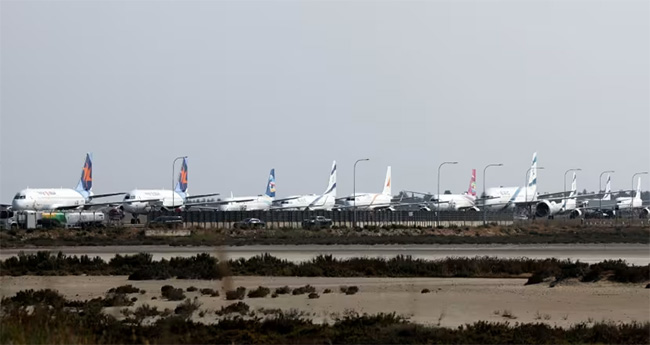Airlines keep avoiding Middle East airspace after US attack on Iran
June 22, 2025 03:13 pm
Airlines continued to avoid large parts of the Middle East on Sunday (Jun 22) after the United States strikes on Iranian nuclear sites, according to flight tracking website FlightRadar24, with traffic already skirting airspace in the region due to recent missile exchanges.
“Following US attacks on Iranian nuclear facilities, commercial traffic in the region is operating as it has since new airspace restrictions were put into place last week,” FlightRadar24 said on social media platform X.
Its website showed airlines were not flying in the airspace over Iran, Iraq, Syria and Israel. They have chosen other routings, such as north via the Caspian Sea or south via Egypt and Saudi Arabia, even if these result in higher fuel and crew costs and longer flight times.
Missile and drone barrages in an expanding number of conflict zones globally represent a high risk to airline traffic.
Safe Airspace, a website run by OPSGROUP, a membership-based organisation that shares flight risk information, said the US attacks on Iran may increase risks to US operators in the region.
“While there have been no specific threats made against civil aviation, Iran has previously warned it would retaliate by attacking US military interests in the Middle East - either directly or via proxies such as Hezbollah,” Safe Airspace said.
Sia Flights Cancelled
Singapore Airlines (SIA) cancelled two flights between Singapore and Dubai on Sunday – SQ494 and SQ495 – following a “security assessment” of the situation in the Middle East.
It said it would be contacting all affected customers, with those impacted to be put on alternative flights or given the option to seek a full refund of the unused portion of their ticket.
Other SIA flights between Singapore and Dubai may also be affected as the situation remains fluid, the airline said.
All SIA and Scoot flights have stopped flying over Iranian airspace and have used alternative flight paths since Aug 2, 2024, the SIA group said last week.
“The SIA Group regularly reviews and determines the flight paths taken by our aircraft based on multiple factors.”
“These include weather conditions, safety and security considerations, advisories from international and regional bodies, insights from independent external security consultants, and regulatory restrictions.”
It added that it will continue to monitor the situation in the Middle East and will adjust flight paths as needed.
Rescue and Evacuation Flights
Since Israel launched strikes on Iran on Jun 13, carriers have suspended flights to destinations in the affected countries, although there have been some evacuation flights from neighbouring nations and some bringing stranded Israelis home.
In the days before the US strikes, American Airlines suspended flights to Qatar, and United Airlines did the same with flights to Dubai.
Safe Airspace said it was possible airspace risks could now extend to countries including Bahrain, Kuwait, Oman, Qatar, Saudi Arabia and the United Arab Emirates. “We continue to advise a high degree of caution at this time,” it said.
Israel’s largest carriers, El Al Israel Airlines, Arkia and Israir, said on Sunday they were suspending rescue flights that allowed people to return to Israel until further notice.
El Al said it would also extend its cancellation of scheduled flights through Friday and Israir said it had halted the sale of tickets for all flights through Jul 7.
A spokesperson for Israel’s airport’s authority said the country’s main airport was expected to reopen for rescue flight landings on Sunday between 1100 and 1700 GMT (7pm and Monday, 1am, Singapore time).
Tens of thousands of Israelis and others who had booked tickets to Israel are stuck abroad.
At the same time, nearly 40,000 tourists in Israel are looking to leave the country, some of whom are going via Jordan’s borders to Amman and others by boat to Cyprus.
“In accordance with security directives, we are working to bring Israelis home as quickly as possible,” Israel’s Transport Minister Miri Regev said in a statement.
Japan’s foreign ministry said on Sunday it had evacuated 21 people, including 16 Japanese nationals, from Iran overland to Azerbaijan. It said it was the second such evacuation since Thursday and that it would conduct further evacuations if necessary.
New Zealand’s government said on Sunday it would send a Hercules military transport plane to the Middle East on standby to evacuate New Zealanders from the region.
It said in a statement that government personnel and a C-130J Hercules aircraft would leave Auckland on Monday. The plane would take some days to reach the region, it said.
The government was also in talks with commercial airlines to assess how they may be able to assist, it added.
Source: Reuters
--Agencies












